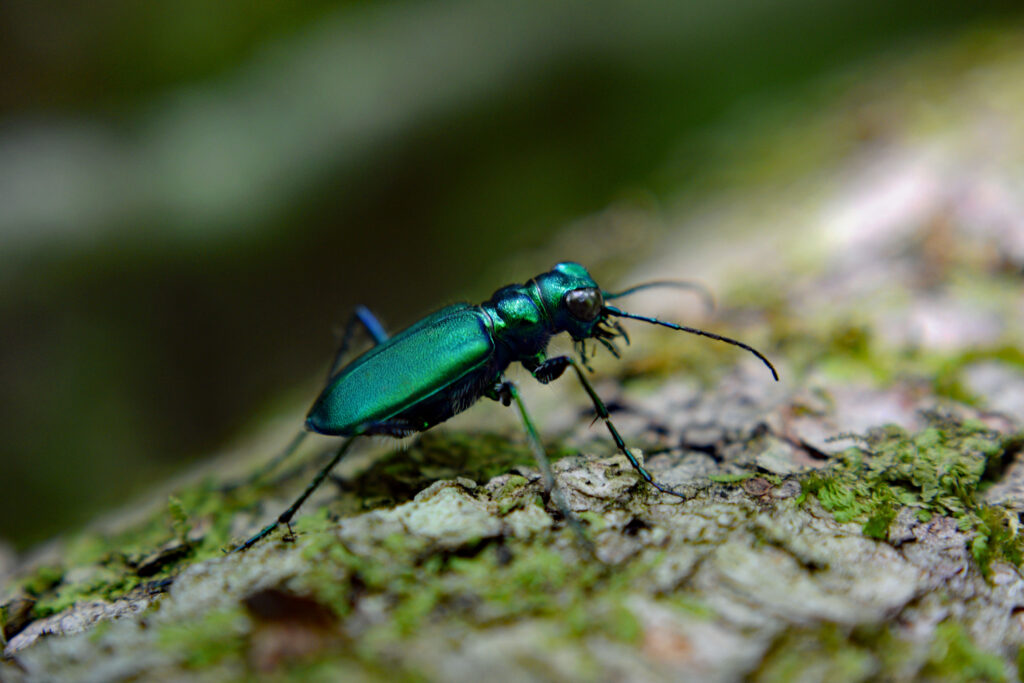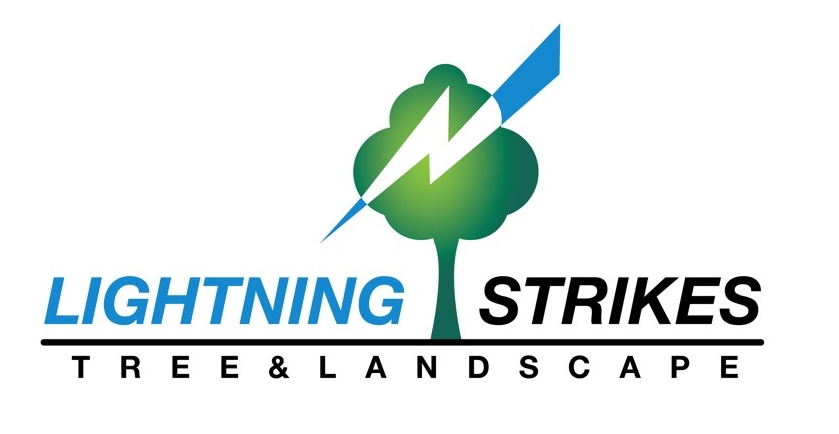-

Macro Shot of Emerald Green Tiger Beetle Probably the most destructive force that tree service companies near Plymouth face is this little guy. To the untrained eye of a homeowners things may seem fine but these beetles will destroy all your trees fast if not found and treated immediately. Regular trimming and tree care maintenance scheduled with a tree service will help mitigate if these ever show up on your property. First discovered in Michigan in 2002, the Emerald Ash Borer (Agrilus planipennis) is a metallic-looking, wood-boring beetle. Emerald Ash Borers are approximately one-third of an inch in length and are about 0.05 inches in width. They tend to be dark green in color with a bright metallic tinge and can be distinguished from other species of jewel beetles by their red-hued abdomen. Other unique features of the Emerald Ash Borer include their asymmetrical antennae and small spine, which lend to the distinctive impressions they leave in the trees they damage. Such impressions are often somewhat visible to the general public but can be misidentified by the untrained eye. Trees that are attacked by emerald ash borers typically only have a life expectancy of one to three more years.
Although their infestations are common across the United States, it is believed that the Emerald Ash Borers were first discovered in Beijing, China, by a French priest named Armand David, who collected specimens whilst passing through during the 1860s where it was eventually published in the Revue d’Entomologie in 1888. Infestations across the United States only became a problem in the early 2000s. It is speculated that the infestations began with Borers making their way across the oceans to the shores of the United States through shipping containers.
In 2002 Michigan noted their first Emerald Ash Borer infestations. It was only recently in 2015 that these Borers became a problem in the city of Plymouth, following this species’ rapid spread to the West at speeds documented up to 40 km per year between the years of 2003 and 2016. These borers are interesting in that, within their native territories, notably Asia, they pose no threat to the environment and surrounding eco-systems. However, in the United States, these insects have become a major problem and, unlike in their native territories, behave like pests. The Borers within the United States feed so heavily on Ash-type barks that entomologists have documented that they feed on these barks prior to even mating.
They tend to multiply fast, often laying their eggs in between crevices and away from predators. The Borer’s larvae feed underneath the bark and hatch within one to two years. These eggs are about half a millimeter to one millimeter in diameter and are initially white in color but tend to develop into a reddish-brown hue if they are indeed fertile. Upon hatching, the larvae tend to eat through the bark, stimulating their development.
The mating process can last for about 50 minutes; the male borers locate the females through visual and sensory cues such as size, females being larger than males, and olfaction, specifically, sex pheromones. Female emerald ash borers tend to live for about six weeks and in their lifetime lay about 40 to 70 eggs; the ones that live longer can lay up to a couple of hundred eggs. They generally emerge from trees after 400 to 500 days where the temperature has been above 10 degrees; these are considered to be the ideal conditions to facilitate growth and replication. Eggs usually take 7 to 10 days to hatch.
In 2005 Emerald Ash Borer infestations were identified in the City of Plymouth, due to the aggressive and rapid nature of these infestations, the city put in place a tree replacement program to help residents maintain healthy gardens. In 2012 the city also introduced prevention practices for public trees where businesses and residents with ash trees on private property are encouraged to consider treatment or removal in the presence of infestations. Approximately twelve percent of the trees in Plymouth are ash, many of which are in parks which meant that the city had to implement action plans to mitigate the spread and replication of these borers, with extra care and attention given to the larger ash trees.
Identifying infestations
The unique swirly tracks notice the most common tell-tale sign of an Emerald Ash Borer infestation that they leave across the surfaces of tree trunks. Crown decline from high to low is often apparent. Other key signs include D-shaped exit holes on the bark, as well as S-shaped galleries or serpentine galleries; these are about ⅛ inches wide and are filled with fine sawdust-like substance as well as a tacky excretion.
Tree trimming can be a viable solution in many situations. In many cases, insecticides can be an effective means of managing such situations. However, many experts believe that when the route of insecticides is taken, the trees will require treatment in the form of spraying for the entire duration of the tree’s lifespan, which is not always a sustainable solution.
Tree removal can be an effective means of dealing with these problems; however, this must be done in a strategic manner. The removal process should only occur during the ‘inactive’ season for Emerald Ash Borers, which is between the months of October and May. This will help to reduce the probability of the colony relocating and repopulating.
You might have seen these insects appear on your tree leaves; it may even be accelerating the defoliation process with the leaves on the trees affected by the infestation dropping leaves before the other trees in the area. If this is the case, it is best to have a professional run a thorough inspection rather than risk climbing the tree yourself. Unfortunately, people frequently injure themselves climbing whilst looking for tree issues and ailments and are often unsuccessful in eliminating the root cause. Fortunately, a highly skilled tree professional with the correct set of experience and the right equipment to ensure safety, not to mention insurance, if anything were to go wrong.
Ideally, if an infestation is only starting, early action is vital, and trees can often be saved. It is best to get in touch with a tree service in your area to have a closer inspection.
Feel free to reach out if you have any questions or concerns. We would be more than delighted to be of service 🙂
Are Trees Damaging Your Property?
Sometimes one bad tree can damage your entire landscape and even your home. Consult with our trained staff for a free assessment
Available 24/7 for Emergency Service
Did lightning strike? That’s our specialty. One call and we will dispatch our emergency response team to handle all your emergency tree service needs
Hours
Monday: 7:30am - 6:30pm
Tuesday: 7:30am - 6:30pm
Wednesday: 7:30am - 6:30pm
Thursday: 7:30am - 6:30pm
Friday: 7:30am - 6:30pm
Saturday: 7:30am - 6:30pm
Sunday: Closed
We Are Serving Plymouth, MA | Milton, MA | Canton, MA
Copyright © 2022 - Lighting Strikes Tree LLC. All Rights Reserved.

